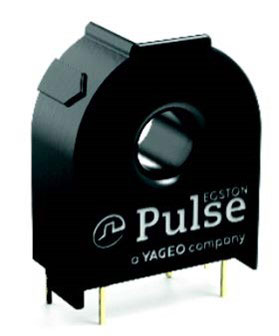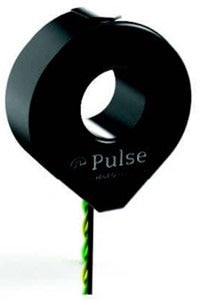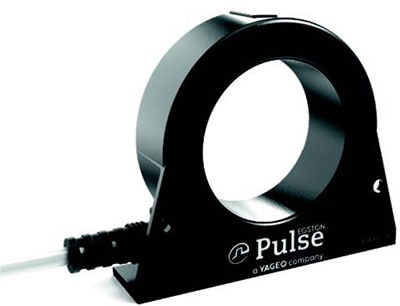Rogowski-Based Coils Deliver Performance and Accuracy for Smart Grids
Electrification is rapidly transforming industries and markets, but the ever-growing demand for reliable electricity supplies proves that we need smarter methods of managing the flow. Smart grids and smart meters are important elements in balancing supply and demand, and non-ferromagnetic current sense coils offer many advantages in designing applications for a growing market.
Data center growth is a significant factor in the demand for electricity, projected to consume more than 9% of U.S. annual electricity consumption by 2030, compared to 4% todayi. AI is supercharging that growth, along with the increase in electrified transportation, a government-subsidized shift to electric heating and cooling, and sustained economic growth.
Investment in new power plants and alternative sources of energy is crucial to meeting demand, but that doesn't solve the bottlenecks and disruptions that traditional energy grids suffer from. Much like the concept of edge computing, smart grids depart from a centralized model to a highly distributed network. With a smart grid, energy flows omnidirectionally and accommodates intermittent energy sources in real time.
Accurate current sensing is essential for managing intermittent sources as well as fault detection and monitoring energy use. It also enables more efficient energy management of the grid, such as demand response programs that balance the load and encourage customers to shift usage to off-peak periods. It also provides precise measurements at the endpoint with smart meters that not only provide more accurate billing, but also help consumers manage their energy consumption.
The Rogowski coil role in smart energy
There are multiple methods for measuring current in smart grid and smart meter applications, but each has pros and cons.
Shunt resistors, for example, are highly accurate and cost-effective but require isolation and are sensitive to temperature changes. Current transformers also require isolation from high-voltage primary circuits but are bulky and have frequency limitations.
Hall effect sensors provide for non-contact measurement, and they are small and suitable for both AC and DC measurements. However, they generally cost more and are less accurate than shunt resistors.
Rogowski coils also measure current without direct electrical contact, and offer higher accuracy than Hall effect sensors. The Rogowski coils often use plastic for the core, which is more flexible and lighter in weight than ferromagnetic cores. They provide better performance for high-current applications and offer a flexible design, wide frequency range, and lower costs than current transformers.
Relying on non-ferromagnetic cores, Rogowski coils reduce errors caused by magnetic saturation, and can accommodate a wider range of current measurements. They can be easily installed around conductors, which makes them suitable for space-constrained applications and ideal for retrofitting.
High accuracy, high frequency options
Pulse Electronics, a Yageo company, offers the RC Series of Rogowski-based AC current sense coils that are highly suited for smart grid and smart metering applications.
RC Series coils are designed for demanding conditions and support a broad spectrum of current. The absence of ferromagnetic cores means no energy loss caused by eddy currents and hysteresis loops, or the typical nonlinear relationship between a magnetic field and magnetic flux density. They also promise exceptional performance at high bandwidth frequencies.
The RC Series comes in three sizes, each of which offers three sensitivity levels, as well as shielded and unshielded options:
RC01 devices (Figure 1) are compact and lightweight, weighing approximately 7 grams, and are suitable for applications with space and weight limitations. They are available in 100 MV/KA, 200 MV/KA, and 300 MV/KA versions.
 Figure 1: A compact RC01 Rogowski technology current sense coil is designed for applications with limited space and/or weight specifications. (Image source: Pulse Electronics)
Figure 1: A compact RC01 Rogowski technology current sense coil is designed for applications with limited space and/or weight specifications. (Image source: Pulse Electronics)
RC03 coils (Figure 2) balance size and performance for use in a wide range of industrial applications. Weighing approximately 23 grams, these are available in 200 MV/KA, 400 MV/KA, and 600 MV/KA versions.
 Figure 2: Balancing size and performance, RC03 coils are intended to fill current sensing requirements for a wide range of industrial applications. (Image source: Pulse Electronics)
Figure 2: Balancing size and performance, RC03 coils are intended to fill current sensing requirements for a wide range of industrial applications. (Image source: Pulse Electronics)
RC05 devices (Figure 3), weighing approximately 48 grams, are more robust for enhanced durability. They are available in 150 MV/KA, 300 MV/KA, and 450 MV/KA versions.
 Figure 3: Robust and durable, RC05 coils are designed for demanding environments and applications. (Image source: Pulse Electronics)
Figure 3: Robust and durable, RC05 coils are designed for demanding environments and applications. (Image source: Pulse Electronics)
Conclusion
Insatiable energy demand will continue driving demand for smart grid and smart metering applications. Pulse Electronics’ RC Series of Rogowski-based AC current sense coils offers optimal performance and reliability in diverse and demanding environments, with a variety of sizes and sensitivity options for a range of applications.
[1] Powering Intelligence: Analyzing Artificial Intelligence and Data Center Energy Consumption, May 24, 2024. EPRI.

Have questions or comments? Continue the conversation on TechForum, DigiKey's online community and technical resource.
Visit TechForum








